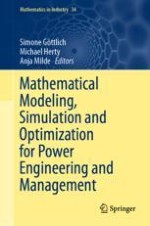This edited monograph offers a summary of future mathematical methods supporting the recent energy sector transformation. It collects current contributions on innovative methods and algorithms. Advances in mathematical techniques and scientific computing methods are presented centering around economic aspects, technical realization and large-scale networks.
Over twenty authors focus on the mathematical modeling of such future systems with careful analysis of desired properties and arising scales. Numerical investigations include efficient methods for the simulation of possibly large-scale interconnected energy systems and modern techniques for optimization purposes to guarantee stable and reliable future operations.
The target audience comprises research scientists, researchers in the R&D field, and practitioners. Since the book highlights possible future research directions, graduate students in the field of mathematical modeling or electrical engineering may also benefit strongly.
